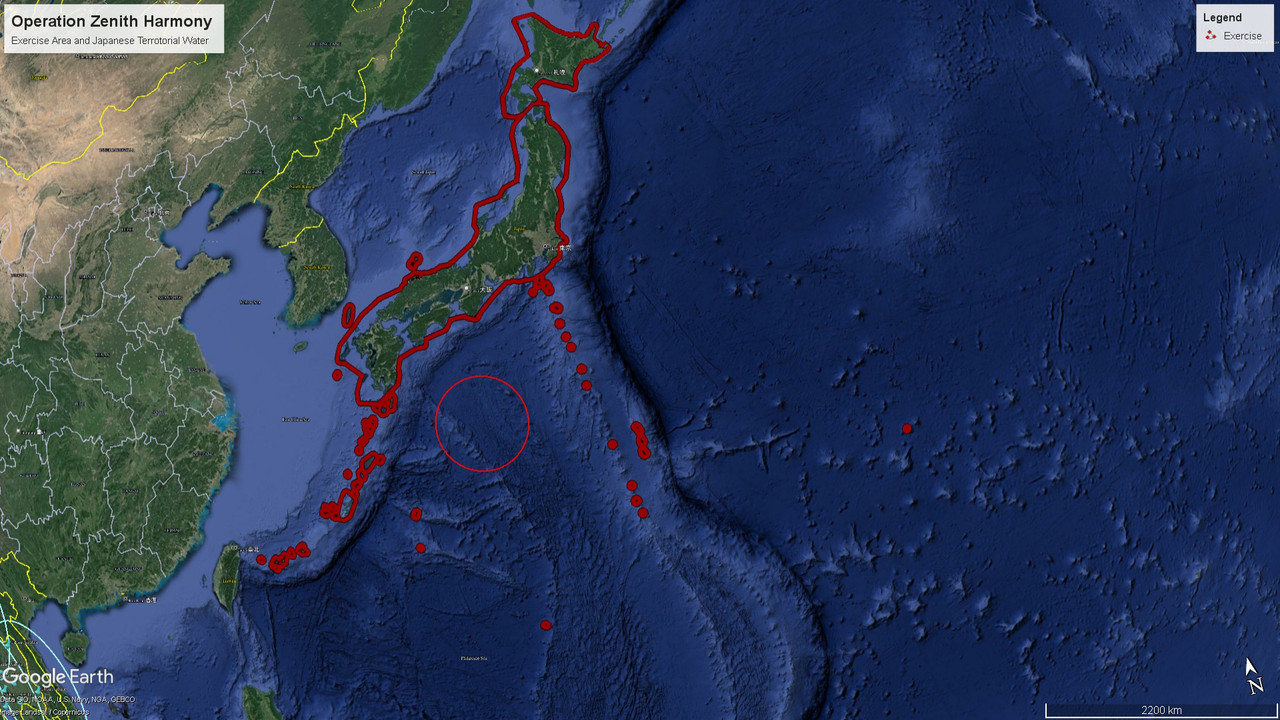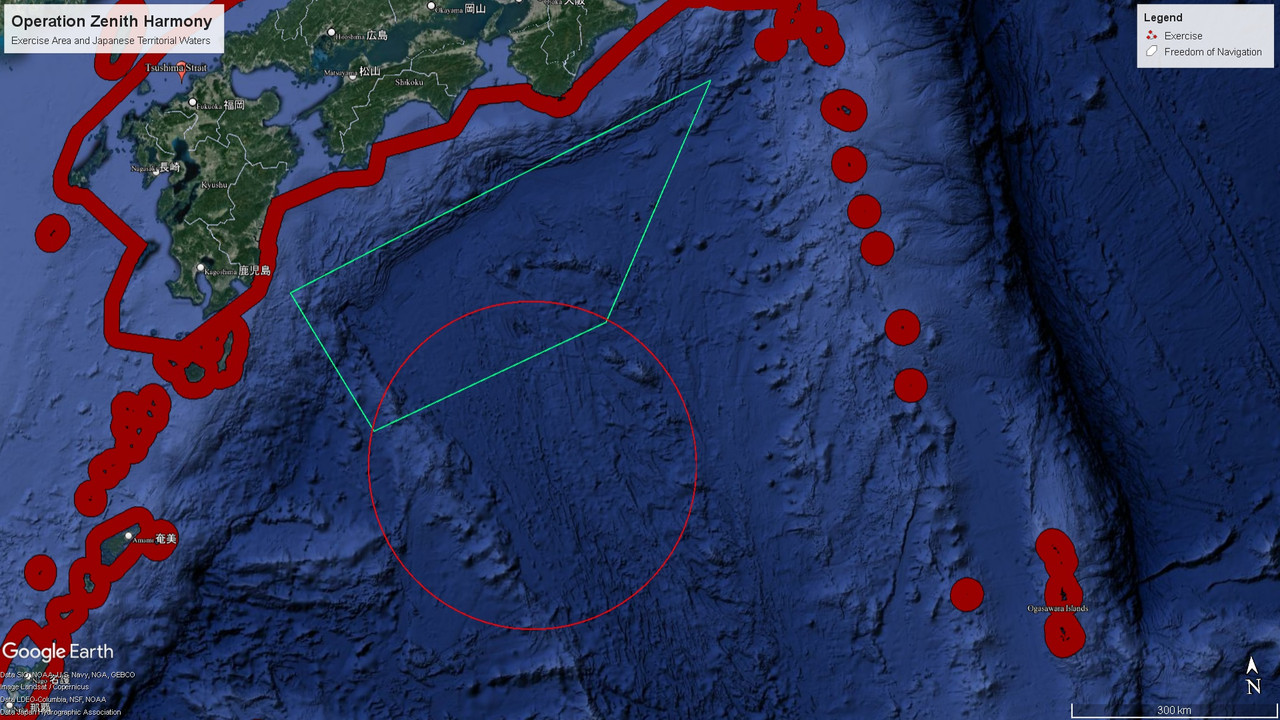- May 4, 2021
- 2,886

Title: Operation Zenith Harmony
Document Number: RTAF-OZH-001/2003
Classification: TOP SECRET
Security Level: Maximum Secure
Date: January 5th, 2003
XI. IntroductionX
1.1 Background
Since Thailand has assumed the role of World Power and the representative of the Asian continent, Asia has transformed significantly. In recent months, three new powers have emerged in East Asia, re-entering the international stage: Japan, Korean, and Taiwan. All these three countries, particularly Japan, have been the one that attempts to challenge the balance of Power in Asia, thus destabilizing the continent. Furthermore, the recent dialogue between the Government of Thailand and Japan has indicated that Japan is currently in a tricky situation, believing to be on equal foot with Thailand. The Defense Ministry of Thailand has formulated the Operation Zenith Harmony, a large-scale wargame near Japan, but outside of its territorial waters, to showcase the capabilities of the Thai Armed Forces.
1.2 Objective
Operation Zenith Harmony is designed to be a large-scale naval fleet exercise using live ammunitions and weapons systems of the Thai Navy First Fleet to ensure readiness and equipment testing. On the other sides, this operation also aims to project the Thai military capability as the World Power, ensuring that the international community recognizes the resource and expertise that the Thai Navy has.
XII. Command and ControlX
2.1 Guidance
This operation is conducted under the guidance of the Defense Minister, Gen. Chavalit Yongchaiyudh, and approval from Prime Minister Thaksin Shinawatra.
2.2 Commanding Authority
This operationis conducted under the command of the Thai Armed Forces Headquarter and the Parliament of Thailand.
XIII. Operational ForcesX
3.1 The Thai Navy First Fleet
Submarine Squadron (SS)
- [3] Preveza-class, Type 209 Variant
Submarine - 108 Crews
- Songkhla Naval Base
- [9] Naresuan-class frigate (1,350 Crews)
- [2] Gepard-class frigate (188 Crews)
- Sattahip Naval Base
- [9] Naresuan-class frigate (1,350 Crews)
- [2] Gepard-class frigate (188 Crews)
- Sattahip Naval Base
3.2 Deployed Vessel
Preveza-class
- HTMS Manopakorn
- HTMS Phahonphonphayuhasena
- HTMS Plaek
- HTMS Uthong
- HTMS Ramesuan
- HTMS Borommarachathirat I
- HTMS Yotfa
- HTMS Worawongsathirat
- HTMS Uthumphon
- HTMS Ekkathat
- HTMS Hao
- HTMS Ban
- HTMS Prasat Thong
- HTMS Chao Fa Chai
- HTMS Si Suthammaracha
- HTMS Narai
- HTMS Phetracha
- HTMS Suriyenthrathibodi
- HTMS Thai Sa
- HTMS Borommakot
- HTMS Ngua Nam Thum
- HTMS Noi
- HTMS Pa Sak
- HTMS Kok
- HTMS Mae Sai
3.3 The Thai Auxiliary Fleet
Logistic Support Squadron (LSS)
- [5] Tanker 23000 (100 Crews)
- Sattahip Naval Base
XIV. ExecutionX
4.1 Initial Deployment
All personnel will be reported to their respective naval bases immediately after the approval of the operation, armed with necessary supplies for the entire course of their deployment. Every individual is in peak physical and mental condition, having undergone rigorous training exercises that simulate the challenges they are likely to face. The fleet is fully operational, with each vessel meticulously inspected and equipped with state-of-the-art weaponry and navigation systems.
4.2 Communication
Effective communication among all the units must be maintained. Any unidentified or suspicious activity must be reported to the command center immediately.
4.3 Rules of Engagement
Engagement will be in accordance with the established Rule of Engagement (ROE) with the application of Increased Vigilance (IVG) and international laws. The use of force must be proportionate, and only used in self-defense or to deter identified threats after all non-lethal methods have been exhausted.
4.4 Support
Logistic support, including fuel, supplies, and maintenance, will be provided by the respective naval bases.
XV. CoordinationX
5.1 Inter-agency
Liaise with maritime agencies such as the Navy, Coast Guard, and Air Force to ensure maximum coverage and sharing of intelligence.
5.2 International
In case any foreign vessels or units are involved, contact must be established with the respective embassies or consulates and the situation must be reported to the Ministry of Foreign Affairs.
XVI. ConclusionX
The Defense Ministry has formulated Operation Zenith Harmony under the Parliament Order presented by the Prime Minister, Thaksin Shinawatra, with the guidance of Defense Minister, Gen. Chavalit Yongchaiyudh. Through the deployment of the Thai First Fleet, the Thai Government expects to showcase its military capability as one of the World Power.
Continuous assessment of the operation, including strategic deployment, will be done to adjust the deployment strategy, as necessary.
[Signature]
Gen. Chavalit Yongchaiyudh
Defence Minister
[Signature]
Thaksin Shinawatra
Prime Minister, Republic of Thailand
Document Clearance:
The Office of the Prime Minister
The Ministry of Foreign Affairs
The National Intelligence Agency
The Royal Thai Air Force Command Center
The Royal Thai Navy Command Center
The Royal Thai Army Command Center
The Royal Thai Armed Forces Headquarters
Distribution List:
The Office of the Prime Minister
The Ministry of Foreign Affairs
The National Intelligence Agency
The Royal Thai Air Force Command Center
The Royal Thai Navy Command Center
The Royal Thai Police
Royal Thai Armed Forces Headquarters
Air Defense Command
The National Assembly of Thailand
Last edited:





